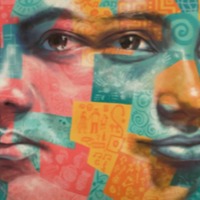
Saidu
There are an estimated 36,000 people living in conditions of modern slavery in Sierra Leone (GSI 2018). Sierra Leone is a source and destination country for men, women and children subjected to forced labour and sex trafficking. During the Sierra Leone Civil War 1991 to 2002 the Revolutionary United Front (RUF) sought to mobilise a youth underclass to form a ‘people’s army’ to overthrow the Momoh regime. The RUF abducted and trained numbers of captured youth to fight as child soldiers in their guerrilla warfare. Saidu emphasises the difficulties faced even by those not tainted with RUF violence in going back home. It is this wartime suspicion and hostility on the part of both civilians and military towards any dishevelled 'bush creature' that explains why the RUF/ SL strategy of abducting young Sierra Leoneans and turning them into combatants by force was so surprisingly effective. Once caught, most young people soon realised they had nowhere to run-that they risked death at the hands of government soldiers and civilians.

Xiaoxiang
Minority children and those from very poor families are extremely vulnerable to trafficking in China. A highly organised practice exists where couples have children for the very purpose of selling them. Children from minorities are also deceived into trafficking under the false promise of work in hospitality, construction and manufacturing but are instead forced to engage in criminal activity or prostitution. There are also an estimated 1.5 million children currently enslaved as forced beggars in China. Xiaoxiang, a young Chinese boy was playing with his brother in his front garden when he was abducted for illegal adoption domestically. Xiaoxiang was rescued by police working on another child abduction and reunited with his family.

Ko Min
Men, women and children are victims of human trafficking for forced labour in the Thai fishing industry. Enslaved people are subjected to physical abuse, excessive and inhumane working hours, sleep and food deprivation, forced use of methamphetamines and long trips at sea confined to the vessel. Due to the fishing industry relying on trans-shipments at sea to reduce expenditure, some find themselves trapped on long-haul trawlers for years at a time. This makes the monitoring of enslaves labour on fishing vessels costly and difficult. The Thai Government has faced severe pressure to tackle forced labour specifically in the fishing sector, with the European Commission threatening a trade ban in 2015 for not taking sufficient measures to combat illegal and unregulated fishing that would cause the loss of up to US$1.4million a year in seafood exports. As a result the Government have reportedly accelerated efforts to combat labour exploitation, however despite this most workers in the Thai fishing sectors remain unregistered. Ko Min was working on a rubber plantation when he was abducted, sold and forced on to a fishing boat. Told he had to work to pay off debt Ko Min was forced to work for up to three days at a time with no sleep. Eventually the boat docked and with the captain distracted Ko Min was able to escape, borrowing money and hiring a motorbike to travel to Hat Yai he was reunited with his brother and the rest of his family.
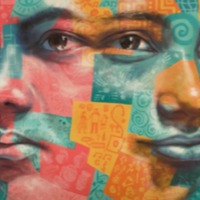
Rozina
The Yazidis are a Kurdish-speaking people who live principally in northern Iraq – where there are around 500,000-600,000. There are another 200,000 settled in other parts of the world. The Yazidis have faced extreme persecution and marginalization in their home communities within Iraq due to their religion and beliefs. Starting in August 2014, ISIS has continuously targeted Yazidis in Iraq and Syria in its campaign to “purify” the region: kidnapping, raping, and forcing girls and women into sexual slavery, and murdering men in mass killings. In 2015, news reports revealed the discovery of a mass grave believed to have remains from more than 70 Yazidi women from Kocho village, where “Rozina” is from.
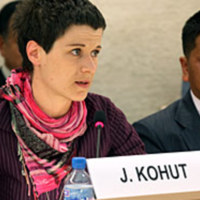
Jana
Bosnian victims are subjected to sex trafficking and forced labor in construction and other sectors in countries across Europe including Croatia, France, Serbia, Slovenia, and Austria. Corruption creates an environment enabling some trafficking crimes. Thirty-year old Jana Kohut from Bosnia told the Human Rights Council how she was trafficked and sexually exploited for four months in neighbouring Slovenia. Jana was abducted and forced to work as a prostitute for four months before she managed to escape. In her testimony, she calls for the creation of safe places and support for victims and survivors of trafficking.
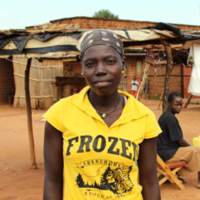
Concy
In war-torn Uganda, the abduction of boys to become child soldiers has been widely reported on. However, the fate of thousands of Ugandan girls, who were abducted and sexually exploited, forced to become sex slaves for rebels and soldiers during Uganda’s civil war, has received less attention.
Concy was one of these Ugandan girls who were abducted and forced to serve the Lord’s Resistance Army (LRA) through sexual slavery, fighting, and forced labour. Her story emphasizes how the stigma around those who manage to escape back to their families and communities makes it difficult to reintegrate, and can lead back into a situation of slavery.
According to the United States Department of State Trafficking in Persons report 2017, some Ugandans abducted by the LRA prior to 2006 remain unaccounted for, and may remain captive with LRA elements in the DRC, Central African Republic, and the disputed area of Kafia Kingi, which is claimed by both Sudan and South Sudan.
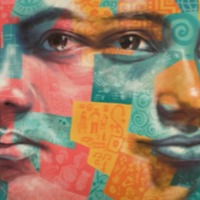
Charlotte Awino
Charlotte’s story explains how at the age of 14 years she was abducted from a boarding school and held captive for 8 years by the Lord's Resistance Army (LRA). Her mother Angelina Atyam never stopped speaking out and working for her release and that of thousands abducted children in Uganda – despite threats by the LRA. According to the United States Department of State Trafficking in Persons report 2017, some Ugandans abducted by the LRA prior to 2006 remain unaccounted for, and may remain captive with LRA elements in the DRC, Central African Republic, and the disputed area of Kafia Kingi, which is claimed by both Sudan and South Sudan.
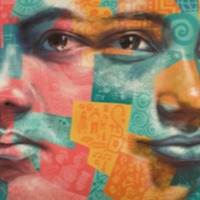
Yei
Thousands of women and children were taken into slavery during the decades of Sudan’s civil war, mainly from Northern Bahr El Ghazal (where the narrator was liberated) and the Nuba Mountains. Slave-taking was revived in 1985 by the National Islamic government of Sudan primarily as a weapon against counterinsurgents in the South, and secondarily a way to reimburse its surrogate soldiers for neutralizing this threat. In 1989 the government created the Popular Defense Forces (PDF), militia trained to raid villages and take people as slaves. PDF recruits were allowed to keep whoever they captured, along with booty of grain and cattle. One study documents 12,000 abductions by name, while NGOs offer estimates ranging from 15,000 to 200,000. The slaves were often moved to large towns in the north on week-long journeys during which the women were repeatedly raped, and then sold to new masters who used them without pay for farming and sexual services. The peace process brought these PDF abductions to an end, but inter-tribal abductions continue in Southern Sudan. In addition, Sudanese children are used by rebel groups in the ongoing conflict in Darfur; Sudanese boys from the country’s eastern Rashaida tribe continue to be trafficked to the Middle East for use as camel jockeys; the rebel organization “Lord’s Resistance Army” has forcibly conscripted children in Southern Sudan for use as combatants in its war against Uganda; and the institution of chattel slavery continues in southern Darfur and southern Kordofan.Yei was captured and sold as a slave to Abdullah who tried to force him to convert to Islam. When he refused, Yei was sent to a cattle camp.
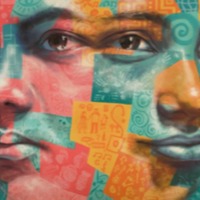
Santino
Thousands of women and children were taken into slavery during the decades of Sudan’s civil war, mainly from Northern Bahr El Ghazal and the Nuba Mountains. Slave-taking was revived in 1985 by the National Islamic government of Sudan primarily as a weapon against counterinsurgents in the South, and secondarily a way to reimburse its surrogate soldiers for neutralizing this threat. In 1989 the government created the Popular Defense Forces (PDF), militia trained to raid villages and take people as slaves. PDF recruits were allowed to keep whoever they captured, along with booty of grain and cattle. One study documents 12,000 abductions by name, while NGOs offer estimates ranging from 15,000 to 200,000. The slaves were often moved to large towns in the north on week-long journeys during which the women were repeatedly raped, and then sold to new masters who used them without pay for farming and sexual services. The peace process brought these PDF abductions to an end, but inter-tribal abductions continue in Southern Sudan. In addition, Sudanese children are used by rebel groups in the ongoing conflict in Darfur; Sudanese boys from the country’s eastern Rashaida tribe continue to be trafficked to the Middle East for use as camel jockeys; the rebel organization “Lord’s Resistance Army” has forcibly conscripted children in Southern Sudan for use as combatants in its war against Uganda; and the institution of chattel slavery continues in southern Darfur and southern Kordofan.Santino was ‘redeemed’ (bought out of slavery) by Christian Solidarity International (CSI), a Zurich-based international human rights organization, in 1999.
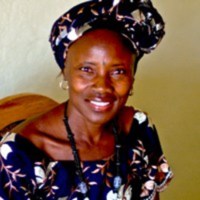
Ruth A.
Settled with freed slaves from the US after 1822, and founded as a republic in 1847, Liberia was named to mean “the country of the free.” But today, men, women and children are trafficked into slavery within Liberia, and children are brought into the country for domestic and sexual slavery from Sierra Leone, Guinea, and Cote d’Ivoire. Children are also trafficked out of Liberia to Guinea, The Gambia, and Nigeria—as well as to Cote d’Ivoire for use in combat. And during Liberia’s civil war, which ended after 14 years in 2003, both government forces and rebel factions forcibly recruited many thousands of children for use in combat and as messengers and porters. Ruth Kamara was trafficked into sex slavery in Liberia’s capital, Monrovia, in the early 1990s. She was brought from Sierra Leone, where women and children are also trafficked out to Guinea, Cote d’Ivoire, Nigeria, Guinea-Bissau, The Gambia, the Middle East, and Europe. As in Liberia, a civil war in Sierra Leone between government and rebel forces has prompted forcible recruitment for combat. In addition, that war of 1991-2002 displaced more than two million people, many of whom became at risk of exploitation by traffickers. There are no reliable statistics for either Liberia or Sierra Leone, but more broadly, across all the countries of West and Central Africa, around 300,000 children are trafficked into slavery each year. Now fashioning the abolitionist movement as a mini civil war that she is “ready to fight,” Ruth explains that her weapon in that war is her testimony as a survivor. She speaks to people in her country, defines human trafficking for them, and then will “always back it up with my story.”
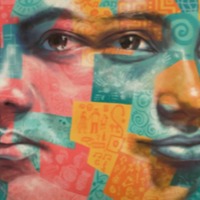
Miranda
The fall of communism in 1991 led to a rise in organized crime in Albania: in 2001 it was estimated 100,000 Albanian women and girls had been trafficked to Western European and other Balkan countries in the preceding ten years. More than 65 percent of Albanian sex-trafficking victims are minors at the time they are trafficked, and at least 50 percent of victims leave home under the false impression that they will be married or engaged to an Albanian or foreigner and live abroad. Another ten percent are kidnapped or forced into prostitution. The women and girls receive little or no pay for their work, and are commonly tortured if they do not comply.Born in Albania, Miranda was trafficked into Belgium, where by some estimates Albanian girls aged 14 and 15 make up nearly half of the foreign women forced into prostitution. Many women are trafficked into richer Western European countries from the poorer Eastern countries, including Albania.
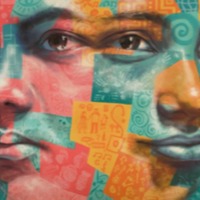
Marco
Thousands of women and children were taken into slavery during the decades of Sudan’s civil war, mainly from Northern Bahr El Ghazal (where the narrator was liberated) and the Nuba Mountains. Slave-taking was revived in 1985 by the National Islamic government of Sudan primarily as a weapon against counterinsurgents in the South, and secondarily a way to reimburse its surrogate soldiers for neutralizing this threat. In 1989 the government created the Popular Defense Forces (PDF), militia trained to raid villages and take people as slaves. PDF recruits were allowed to keep whoever they captured, along with booty of grain and cattle. One study documents 12,000 abductions by name, while NGOs offer estimates ranging from 15,000 to 200,000. The slaves were often moved to large towns in the north on week-long journeys during which the women were repeatedly raped, and then sold to new masters who used them without pay for farming and sexual services. The peace process brought these PDF abductions to an end, but inter-tribal abductions continue in Southern Sudan. In addition, Sudanese children are used by rebel groups in the ongoing conflict in Darfur; Sudanese boys from the country’s eastern Rashaida tribe continue to be trafficked to the Middle East for use as camel jockeys; the rebel organization “Lord’s Resistance Army” has forcibly conscripted children in Southern Sudan for use as combatants in its war against Uganda; and the institution of chattel slavery continues in southern Darfur and southern Kordofan.Marco was captured and taken by South Sudanese militia where he was sent to live with Jima Mahmoud. Marco was subjected to forced labour, forced to convert to Islam, and trained to become a soldier for the militia.
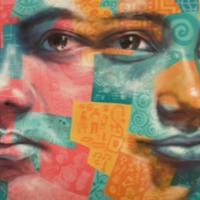
Manju
Manju was abducted and forced to work for a year as a child soldier in Sri Lanka at the age of 17, one of hundreds of thousands of children who participate in armies and armed groups in more than 30 countries around the world. The problem is most critical in Africa, where up to 100,000 children are estimated to be involved in armed conflict. Child soldiers also exist in Afghanistan, Burma, India, Indonesia, Iran, Iraq, Israel and the Occupied Palestinian Territories, though international law sets 18 as the minimum age for all participation in hostilities. In Sri Lanka, children as young as nine were abducted and used in combat by the Liberation Tigers of Tamil Eelam (LTTE) during its conflict with the Sri Lankan government, between 1983 and 2002. Children—most aged 14 or 15 and over 40 percent girls—were used for massed frontal attacks in major battles, and some between the ages of 12 and 14 were used to massacre women and children in rural villages. Others were used as human mine detectors, assassins and suicide bombers. A ceasefire was implemented in February 2002, this did not halt the LTTE’s use of child soldiers. Children were then more likely to be forcibly recruited: people saw no reason to give their children to the LTTE if they did not perceive themselves to be at risk from the government, and so the LTTE resorted to abduction. In 1994, one in 19 child recruits was abducted. By 2004, only one in 19 was a volunteer.
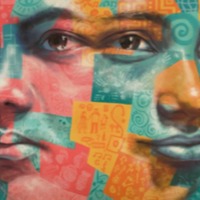
Gau
Thousands of women and children were taken into slavery during the decades of Sudan’s civil war, mainly from Northern Bahr El Ghazal and the Nuba Mountains. Slave-taking was revived in 1985 by the National Islamic government of Sudan primarily as a weapon against counterinsurgents in the South, and secondarily a way to reimburse its surrogate soldiers for neutralizing this threat. In 1989 the government created the Popular Defense Forces (PDF), militia trained to raid villages and take people as slaves. PDF recruits were allowed to keep whoever they captured, along with booty of grain and cattle. One study documents 12,000 abductions by name, while NGOs offer estimates ranging from 15,000 to 200,000. The slaves were often moved to large towns in the north on week-long journeys during which the women were repeatedly raped, and then sold to new masters who used them without pay for farming and sexual services. The peace process brought these PDF abductions to an end, but inter-tribal abductions continue in Southern Sudan. In addition, Sudanese children are used by rebel groups in the ongoing conflict in Darfur; Sudanese boys from the country’s eastern Rashaida tribe continue to be trafficked to the Middle East for use as camel jockeys; the rebel organization “Lord’s Resistance Army” has forcibly conscripted children in Southern Sudan for use as combatants in its war against Uganda; and the institution of chattel slavery continues in southern Darfur and southern Kordofan.Gau was ‘redeemed’ (bought out of slavery) by Christian Solidarity International (CSI), a Zurich-based international human rights organization, in January 2007.
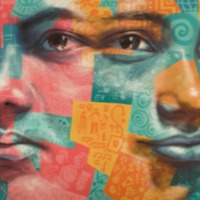
Flutura
Born in Albania, Flutura was trafficked into Italy, where trafficking victims also arrive from Nigeria, Romania, Bulgaria, China, and South America. One NGO estimates that 48 percent of the prostitutes in Italy are from Eastern Europe. Many women are trafficked into richer Western European countries from the poorer Eastern countries, including Albania. The fall of communism in 1991 led to a rise in organized crime in Albania: in 2001 it was estimated 100,000 Albanian women and girls had been trafficked to Western European and other Balkan countries in the preceding ten years. More than 65 percent of Albanian sex-trafficking victims are minors at the time they are trafficked, and at least 50 percent of victims leave home under the false impression that they will be married or engaged to an Albanian or foreigner and live abroad. Another ten percent are kidnapped or forced into prostitution. The women and girls receive little or no pay for their work, and are commonly tortured if they do not comply.
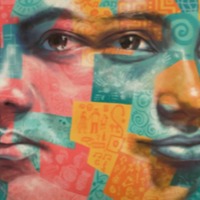
Anyang
Thousands of women and children were taken into slavery during the decades of Sudan’s civil war, mainly from Northern Bahr El Ghazal and the Nuba Mountains. Slave-taking was revived in 1985 by the National Islamic government of Sudan primarily as a weapon against counterinsurgents in the South, and secondarily a way to reimburse its surrogate soldiers for neutralizing this threat. In 1989 the government created the Popular Defense Forces (PDF), militia trained to raid villages and take people as slaves. PDF recruits were allowed to keep whoever they captured, along with booty of grain and cattle. One study documents 12,000 abductions by name, while NGOs offer estimates ranging from 15,000 to 200,000. The slaves were often moved to large towns in the north on week-long journeys during which the women were repeatedly raped, and then sold to new masters who used them without pay for farming and sexual services. The peace process brought these PDF abductions to an end, but inter-tribal abductions continue in Southern Sudan. In addition, Sudanese children are used by rebel groups in the ongoing conflict in Darfur; Sudanese boys from the country’s eastern Rashaida tribe continue to be trafficked to the Middle East for use as camel jockeys; the rebel organization “Lord’s Resistance Army” has forcibly conscripted children in Southern Sudan for use as combatants in its war against Uganda; and the institution of chattel slavery continues in southern Darfur and southern Kordofan.Anyang was abducted by Arab Murahaleen in 1998. Upon arrival in the North she was given to a man and forced to milk his cows.
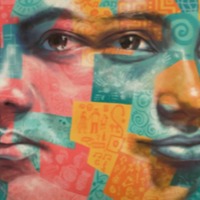
Anita
Anita was trafficked from Nepal to India in 1998 at the age of 27. Her narrative emphasizes the uniquely female elements of slavery. She describes her pain as a mother separated from her children, mentions the idea that the women in the brothel are her “sisters,” seeks escape by offering an earring to one woman, and finally escapes when another woman accidentally leaves a gate open. She gains empathy from a client by telling him: “I am like your daughter.” Even Anita’s psychological turning-point from freedom to slavery is female specific. “They cut off my hair,” she remembers. “I could not leave the brothel without everyone identifying me as a prostitute…short hair is the sign of a wild woman.” Thousands of Nepali women and children are trafficked every year across the border into Indian brothels, and Nepal has an unknown number of internal sex trafficking victims as well. In response to a dowry practice, where they must offer gifts that could be worth several years’ income, some parents sell their daughters rather than have them married. Other women are drugged and taken across the border, like Anita. Once enslaved, Nepali girls and women are more likely to be arrested than rescued by the police, and most Nepalese victims never leave India, even after liberation. Those who do are often shunned by their families and remain in Kathmandu at shelters. Anita describes such familial rejection in the wake of her experience.

Ajok
Thousands of women and children were taken into slavery during the decades of Sudan’s civil war, mainly from Northern Bahr El Ghazal and the Nuba Mountains. Slave-taking was revived in 1985 by the National Islamic government of Sudan primarily as a weapon against counterinsurgents in the South, and secondarily a way to reimburse its surrogate soldiers for neutralizing this threat. In 1989 the government created the Popular Defense Forces (PDF), militia trained to raid villages and take people as slaves. PDF recruits were allowed to keep whoever they captured, along with booty of grain and cattle. One study documents 12,000 abductions by name, while NGOs offer estimates ranging from 15,000 to 200,000. The slaves were often moved to large towns in the north on week-long journeys during which the women were repeatedly raped, and then sold to new masters who used them without pay for farming and sexual services. The peace process brought these PDF abductions to an end, but inter-tribal abductions continue in Southern Sudan. In addition, Sudanese children are used by rebel groups in the ongoing conflict in Darfur; Sudanese boys from the country’s eastern Rashaida tribe continue to be trafficked to the Middle East for use as camel jockeys; the rebel organization “Lord’s Resistance Army” has forcibly conscripted children in Southern Sudan for use as combatants in its war against Uganda; and the institution of chattel slavery continues in southern Darfur and southern Kordofan.
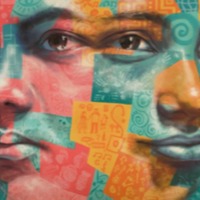
Ajok A.
Thousands of women and children were taken into slavery during the decades of Sudan’s civil war, mainly from Northern Bahr El Ghazal and the Nuba Mountains. Slave-taking was revived in 1985 by the National Islamic government of Sudan primarily as a weapon against counterinsurgents in the South, and secondarily a way to reimburse its surrogate soldiers for neutralizing this threat. In 1989 the government created the Popular Defense Forces (PDF), militia trained to raid villages and take people as slaves. PDF recruits were allowed to keep whoever they captured, along with booty of grain and cattle. One study documents 12,000 abductions by name, while NGOs offer estimates ranging from 15,000 to 200,000. The slaves were often moved to large towns in the north on week-long journeys during which the women were repeatedly raped, and then sold to new masters who used them without pay for farming and sexual services. The peace process brought these PDF abductions to an end, but inter-tribal abductions continue in Southern Sudan. In addition, Sudanese children are used by rebel groups in the ongoing conflict in Darfur; Sudanese boys from the country’s eastern Rashaida tribe continue to be trafficked to the Middle East for use as camel jockeys; the rebel organization “Lord’s Resistance Army” has forcibly conscripted children in Southern Sudan for use as combatants in its war against Uganda; and the institution of chattel slavery continues in southern Darfur and southern Kordofan.Ajok A. was ‘redeemed’ (bought out of slavery) by Christian Solidarity International (CSI), a Zurich-based international human rights organization, in 1999.
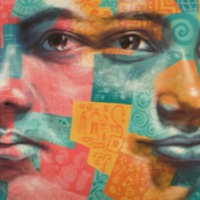
Achai
Thousands of women and children were taken into slavery during the decades of Sudan’s civil war, mainly from Northern Bahr El Ghazal and the Nuba Mountains. Slave-taking was revived in 1985 by the National Islamic government of Sudan primarily as a weapon against counterinsurgents in the South, and secondarily a way to reimburse its surrogate soldiers for neutralizing this threat. In 1989 the government created the Popular Defense Forces (PDF), militia trained to raid villages and take people as slaves. PDF recruits were allowed to keep whoever they captured, along with booty of grain and cattle. One study documents 12,000 abductions by name, while NGOs offer estimates ranging from 15,000 to 200,000. The slaves were often moved to large towns in the north on week-long journeys during which the women were repeatedly raped, and then sold to new masters who used them without pay for farming and sexual services. The peace process brought these PDF abductions to an end, but inter-tribal abductions continue in Southern Sudan. In addition, Sudanese children are used by rebel groups in the ongoing conflict in Darfur; Sudanese boys from the country’s eastern Rashaida tribe continue to be trafficked to the Middle East for use as camel jockeys; the rebel organization “Lord’s Resistance Army” has forcibly conscripted children in Southern Sudan for use as combatants in its war against Uganda; and the institution of chattel slavery continues in southern Darfur and southern Kordofan.